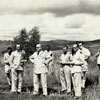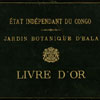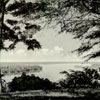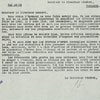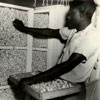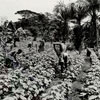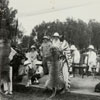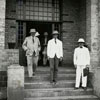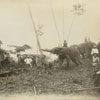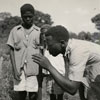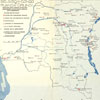Agriculture and agronomy
A rational organisation of agriculture? Theory and practice
By order of Leopold II, professor Emile Laurent of the Institut agronomique in Gembloux authored the master plan for a rational organisation of agriculture with special attention to fundamental research at the end of the 19th century.
His recommendations were only partly observed with the creation of test towns in Eala and Kisantu. Leopold II opted for a massive exploitation of rubber in order to finance his Congo endeavour, which would eventually become one of the darkest chapters in Belgian history. Even after the Belgian state had taken over the colony, the agricultural policy, under the supervision of Leuven professor Edmond Leplae, remained controversial. The introduction in 1917 of the system of obligatory cultivation did not change anything for the good. In 1926, in the wake of the second colonial congress, the Régie des Plantations de la Colonie (REPCO) was set up by Minister for Colonies Edouard Pècher. This institution lacked the necessary authority and moreover had to deal with the economic crisis of the 1930s. When the colonial authorities crushed a series of uprisings in the countryside causing much bloodshed, the image of Belgium got genuinely stained.The Congolese indigenous is a primitive who does not need many things. If required, he cultivates as few as possible. – Prof. Edmond Leplae, Agriculture Service of the Ministry of Colonies.
Agronomy or agricultural economics: INÉAC/NILCO
The definitive failure of the colonial agricultural policy occurred in 1933 upon initiative of Leopold III, then Duke of Brabant. After trips to Congo and Dutch India he would be allowed to call himself “field expert”. The system of obligatory cultivation was abolished and the organisation of the so-called “chefferies” or chief posts was acknowledged. Shortly afterwards, the Institut National pour l'Etude Agronomique du Congo Belge (INÉAC) or National Institute for agronomy in Belgian Congo became the successor of REPCO. This new institution with a clear scientific character would play a crucial role in the supply of rubber and palm oil during the Second World War. After the war, the institution specialised in various planting and agricultural aspects. In the 1950s, the research centre in Yangambi developed into a crown gem of the Belgian colonial agriculture policy and was of international renown. The NILCO created research centres all over the territory of Belgian Congo and Rwanda-Urundi. The independence of Belgian Congo in 1960 and of Rwanda-Urundi in 1962 abruptly ended the expertise of NILCO had developed. Critics were of the opinion that the institution only served the interest of large-scale and export-oriented agriculture. On 31st December 1962, the institution was closed.

